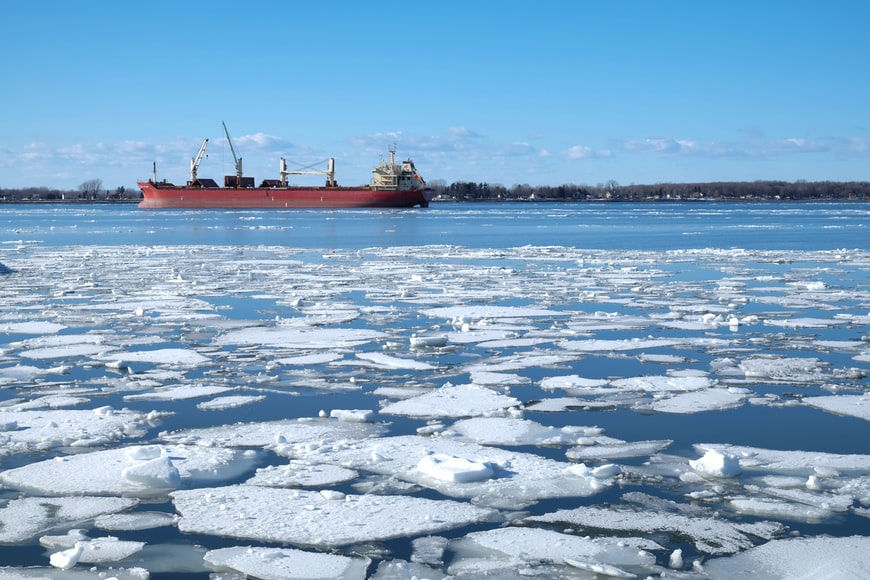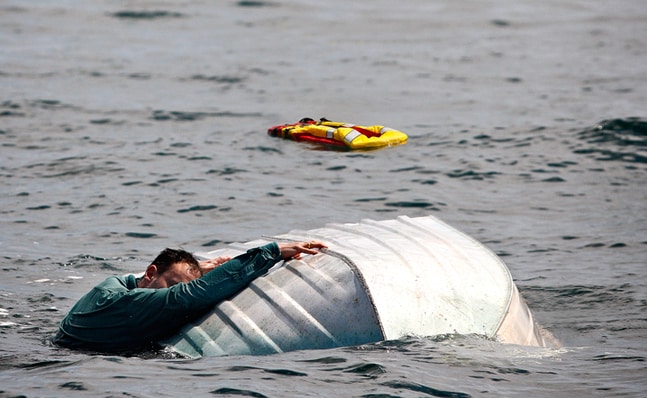Cold Water Shock is a real danger in water below 15°C. If you do find yourself in the water, a lifejacket could literally save your life.
Cold Water Shock is a cause of death that many people fail to appreciate. Adequate clothing and a lifejacket will potentially help you to survive long enough to be recovered.
When the body is suddenly immersed in cold water it experiences a number of physiological responses that can rapidly incapacitate and even kill. The sudden lowering of skin temperature is one of the most profound stimuli that the body can encounter.
The biggest danger is inhaling water and drowning, even if the water is flat, calm and you know how to swim. Cold Water Shock causes an immediate loss of breathing control. You take one or more huge gasps, followed by hyperventilation – very rapid breathing that is hard or impossible for you to control.
As blood vessels contract, increases in heart rate and blood pressure may result in cardiac arrest even in people who are in good health. At the same time a “gasp” response may result in water being inhaled into the lungs and your breathing rate may increase by as much as tenfold.
The condition causes involuntary body reactions that can be as swift as they are deadly – and the ability to swim well has no impact on these responses. It is far deadlier than Hypothermia, yet far less understood by boaters in general.
Hypothermia kills over time as heat is conducted away from the body leading to a gradual decline in body core temperature and loss of swimming ability, unconsciousness and ultimately death. Conversely, most people who are susceptible to Cold Water Shock die in the first minute of immersion.
In the majority of cases, victims aren’t stupid or intentionally reckless, and many are strong swimmers. They simply have the misfortune of getting caught in an exceptionally lethal trap. Cold water preys on the unsuspecting and the careless, but it also waits patiently offshore for those with plenty of experience but who don’t take it seriously.
What happens?
Sudden cold water immersion drastically reduces your ability to hold your breath typically from a minute or so to less than 10 seconds, whilst cold water in your ears can cause vertigo and disorientation.
At a water temperature below 15°C, and if you are not wearing a life jacket, especially an automatic one, cold water shock will:
- cause you to inhale as you go under the water, due to an involuntary gasping reflex, and drown without coming back to the surface
- drastically reduce your ability to hold your breath underwater, typically from a minute or so to less than 10 seconds
- induce vertigo as your ears are exposed to cold water, resulting in failure to differentiate between up and down

Cold Water Shock is a danger in water below 15°C; that’s more or less the summertime average around the coast of the UK. It is therefore important to think carefully about the clothing you wear and protection from the cold – a dry suit will provide additional protection, particularly in very cold water.
Coupled with the shock of going over the side, the condition may well contribute to a feeling of panic as you struggle to stay afloat; this will be far easier to overcome if you are wearing a correctly fitting lifejacket.
A very real risk
Last year saw a dog owner fall victim to Cold Water Shock after diving into the sea from his boat in an attempt to rescue his pet. The 59-year-old was spotted in the water by two jet-ski riders near Brightlingsea in Essex. The man’s son had reportedly tied a rope around his father to prevent him from becoming fully submerged in the water. Emergency services, including an air ambulance and coastguard helicopter, were scrambled to the scene. The casualty was rushed to hospital in a critical condition, but despite having been rescued after just ten minutes, he was sadly declared dead several hours later.

What to do
The RNLI’s advice is to float for around 60 to 90 seconds – the time it takes for the effects of the cold shock to pass and for you to regain control of your breathing. The recommended floating position is to lean back in the water and keep your airway clear while keeping calm to maintain breathing levels. You should then be in a better position to attempt to swim to safety, or call for help.
The key to surviving cold shock is being alert to the symptoms and acting quickly to protect your airway and conserve your strength. If you ever recover someone from the water, they may seem okay, but may well be susceptible to secondary drowning where any water entering the lungs can cause a condition called pulmonary oedema. This can happen within 1 to 24 hours after an incident in the water.
Symptoms to look out for are coughing, chest pain, troubled breathing, tiredness and irritability. A close eye may need to be kept on the person after an incident in case of these delayed symptoms.

The RYA advises all boaters to think about the temperature of the water, make sure you are wearing a lifejacket, unless you have assessed it is definitely safe not to do so, and clip on your ISO approved safety line when the situation and weather dictate it.
Know your limits
Most people unfamiliar with cold water find 21C to be quite cold. On the other hand, a competitive open-water swimmer who is used to swimming in 13C water, will probably think that 21C doesn’t feel very cold at all. What’s important to your safety is how you personally respond to cold water.
For more guidance on the risks of Cold Water Shock, contact the RYA Cruising Team on 023 8060 4233 for your free copy of the latest Safety Advisory Notice. More information on looking after yourself can also be found at www.rya.org.uk/go/safety
Why not try a one-day RYA Sea Survival course? It will show you how to make the best use of liferafts and the equipment they contain. You'll also pick up survival techniques, top tips on the medical aspects of sea survival, as well as an in-depth knowledge of search and rescue techniques. Visit www.rya.org.uk/go/seasurvival


